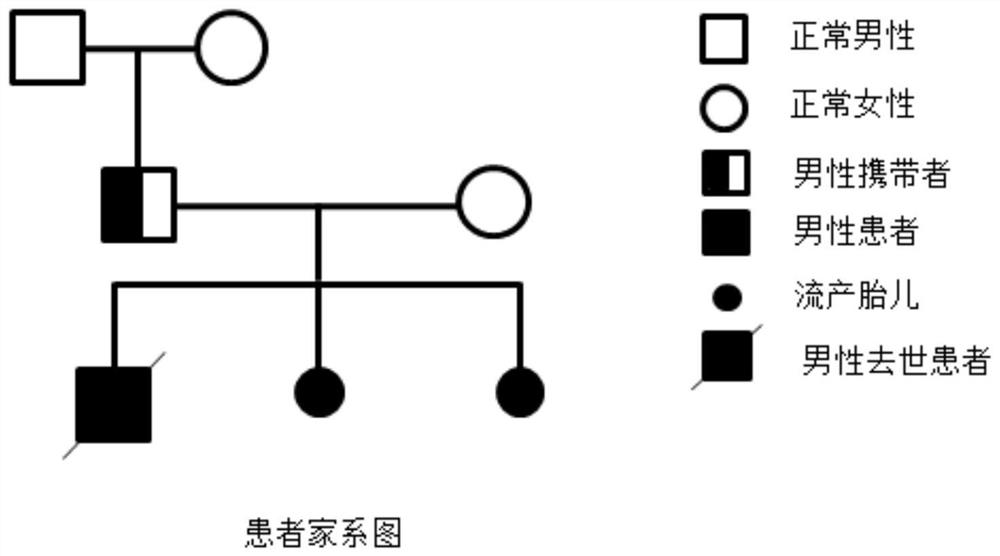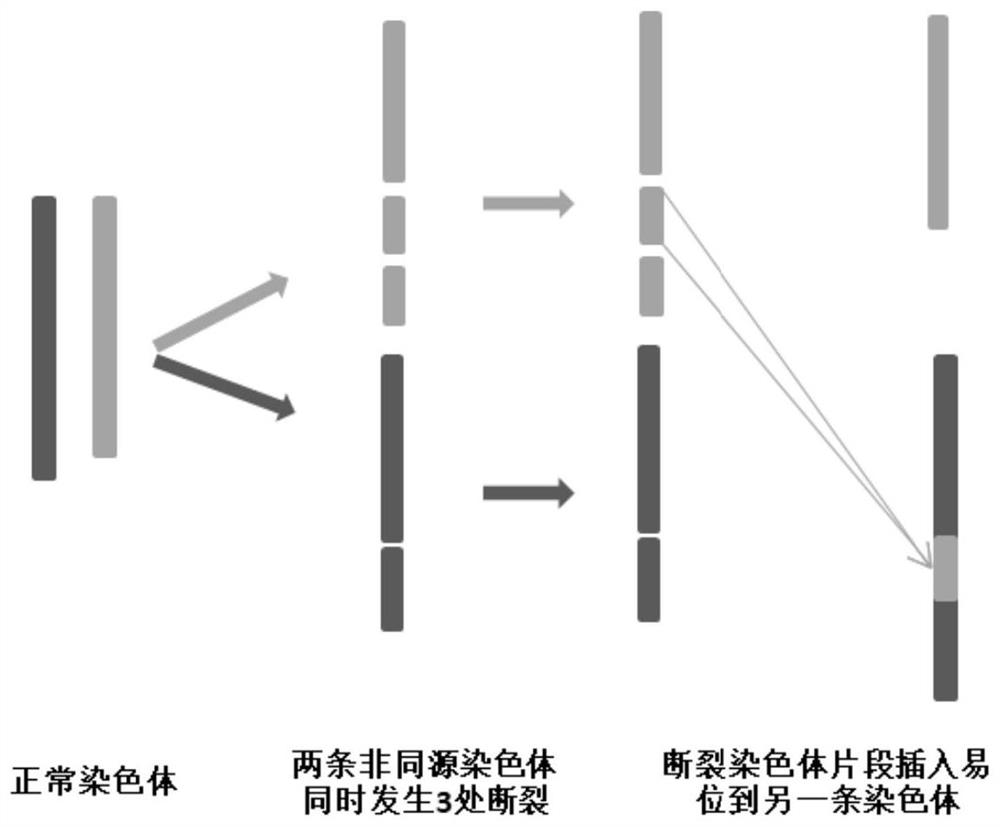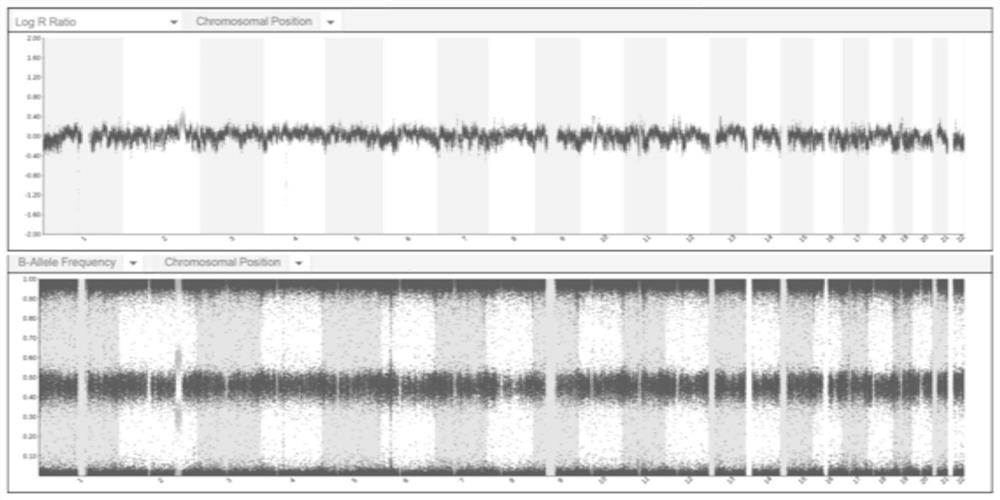Method for identifying chromosome insertion translocation carried embryo and normal embryo
A chromosome and embryo technology, applied in the field of genetic diagnosis and human assisted reproduction, can solve the problems of inaccurate detection of chromosome structure variation, etc., achieve the effect of eliminating fertility problems, simple application, and solving fertility problems
- Summary
- Abstract
- Description
- Claims
- Application Information
AI Technical Summary
Problems solved by technology
Method used
Image
Examples
Embodiment 1
[0050] Example 1: Collection of Reference Samples from Patients and Parents of Patients
[0051] We recruited 3 chromosomal balanced insertional translocation carrier families who will undergo assisted reproduction, and the selected ones are all from the Shanghai Jiai Genetics and Infertility Diagnosis and Treatment Center of the Obstetrics and Gynecology Hospital Affiliated to Fudan University. Each family was required to sign a written informed consent, and the research protocol was approved by the Human Subjects Ethics Committee of Shanghai Jiai Genetics and Infertility Clinic, Fudan University Obstetrics and Gynecology Hospital.
[0052] From March 2020 to June 2021, all three families had a history of recurrent spontaneous abortion or a fetus with chromosomal abnormalities. patient's spouse". At the same time of recruitment, each patient couple and patient relatives (the patient's relatives can be selected from the patient's parents, children, siblings, or patient couple...
Embodiment 2
[0163] Example 2: In Vitro Fertilization, Blastocyst Biopsy and Whole Genome Amplification (WGA)
[0164] 1. In vitro fertilization
[0165] In vitro fertilization (IVF) was carried out on the recruited families, and the in vitro fertilization method followed the conventional methods in the field; the maternal / paternal age, phenotype, ovulation results, number of fertilized eggs and the number of blastocysts finally used for biopsy in these families were listed in Table 2. Through the above in vitro fertilization, a total of 31 blastocysts were obtained from the three families for subsequent biopsy and haplotype analysis. Family No. 1 underwent two ovulation induction cycles, and families No. 2 and No. 3 underwent one ovulation induction cycle.
[0166] Table 2. Basic information and in vitro fertilization of families No. 1-3
[0167]
[0168] 1 The number of obtained oocytes and MII, the number of fertilized embryos, the number of D3 embryos, and the number of D5 / D6 bl...
Embodiment 3
[0241] Example 3: SNP Genotyping and Haplotypes Analysis
[0242] 1. SNP genotype detection
[0243] Using Illumina SNP microarray for SNP genotype detection, each chip contains nearly 700,000 SNPs, which can fully cover 23 pairs of human chromosomes. The 31 samples obtained from blastocyst biopsy and whole-genome amplification in Example 2 were grouped according to family, and were grouped with 3 whole-genome amplification samples of the patient couple and relatives of the family, respectively, for microarray SNP gene analysis. Type detection and analysis, the grouping situation is shown in Table 3. The specific experimental method of the gene chip is the same as that described in Example 1, and will not be repeated here.
[0244] Table 3. SNP array experimental grouping of families 1-3
[0245]
[0246] Note: F stands for female, M stands for male
[0247] 2. Detection of embryo chromosome aneuploidy and insertion fragment copy number variation
[0248] The principle...
PUM
 Login to View More
Login to View More Abstract
Description
Claims
Application Information
 Login to View More
Login to View More - R&D
- Intellectual Property
- Life Sciences
- Materials
- Tech Scout
- Unparalleled Data Quality
- Higher Quality Content
- 60% Fewer Hallucinations
Browse by: Latest US Patents, China's latest patents, Technical Efficacy Thesaurus, Application Domain, Technology Topic, Popular Technical Reports.
© 2025 PatSnap. All rights reserved.Legal|Privacy policy|Modern Slavery Act Transparency Statement|Sitemap|About US| Contact US: help@patsnap.com



